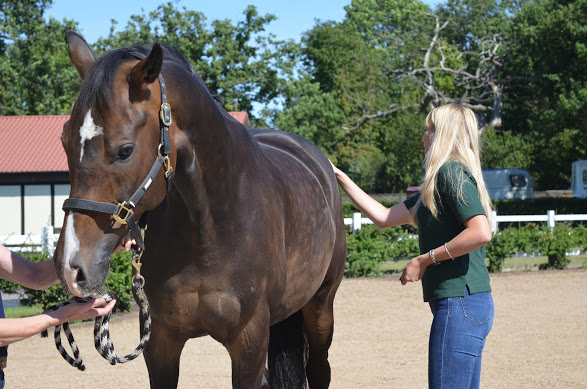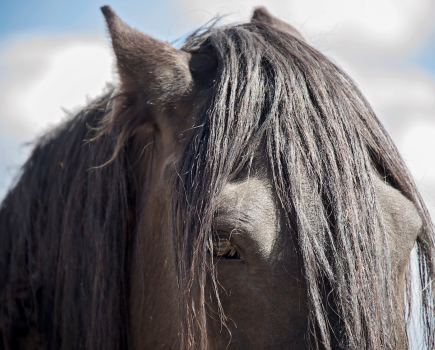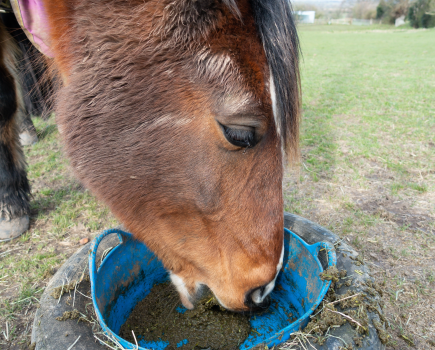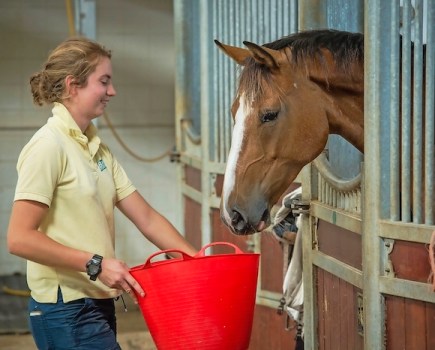In partnership with SPILLERS™
Being able to identify excess weight gain is the first step towards getting your horse’s figure back in check, but regular monitoring is key to being able to spot gradual changes, tracking progress and in turn, deciding if further changes in diet and/ or management may be needed.
Using the new Body Condition Index tool is one great way of assessing your horse’s condition, which can be used in addition to more traditional methods. We explore all these techniques methods below.
Weigh tape tips
Although they may under or over-estimate your horse’s actual weight, if used correctly weigh tapes can be a useful way to tracking gradual changes.
- Make sure your horse is stood as squarely as possible on a firm, level surface.
- Place the weigh tape over the horse’s back at the base of the withers, making sure that the black arrow is pointing towards the ground. Next, bring the tape underneath the girth area just behind the foreleg and elbow.
- Check your weigh tape is correctly positioned. It is likely it will be on a slight angled line (/). If it is on a vertical line the tape has been positioned too far back and will give an inaccurate reading.
- Always use the same weigh tape to help improve accuracy when comparing measurements over time.
- Try to monitor your horse’s weight weekly, ideally at the same time of day as changes in gut fill can affect the result – this is why most of us prefer to stand on the scales first thing in the morning!
- Remember weigh tapes are not accurate for pregnant mares and foals/youngstock (especially those under 6 months of age).
- Ideally monitor weekly.
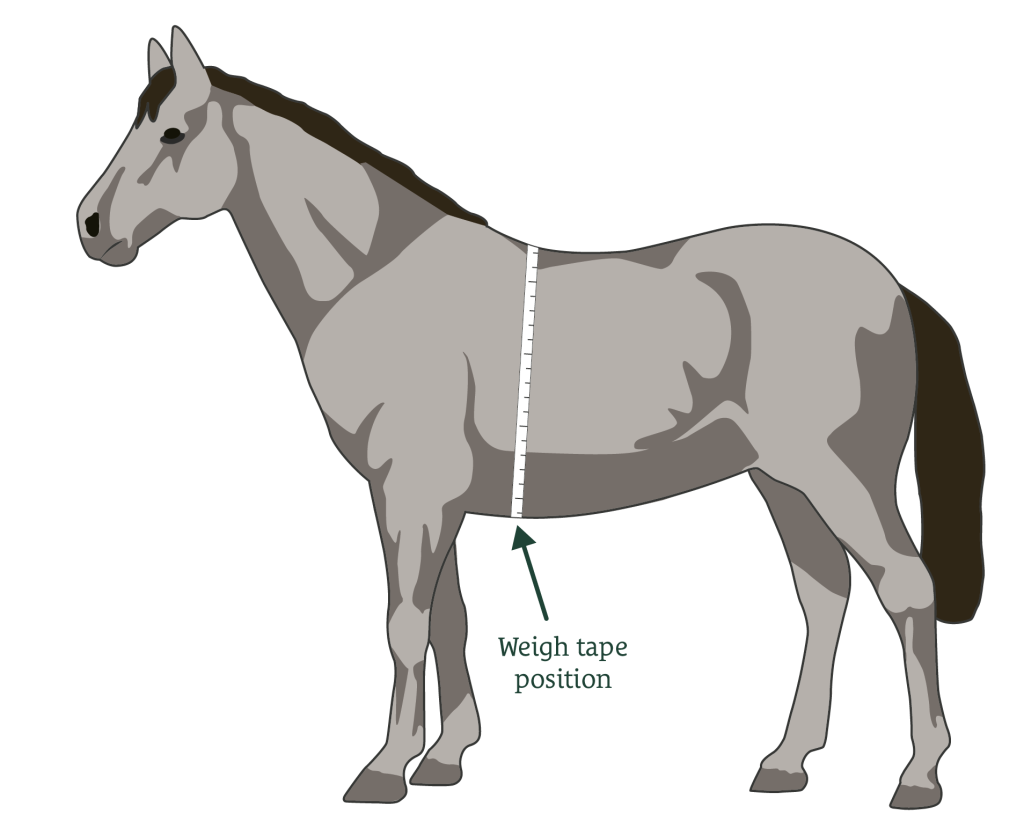
Body condition scoring is a practical method of assessing body fat by eye and by touch. Several areas where fat is commonly laid down are scored using a numerical grading system, most commonly a 1-9 or 0-5 scale. SPILLERS recommend using the more widely validated (scientifically tested) 1-9 scale, but which ever system you use, the important thing is to apply it consistently.
Tip: Body condition score can be slow to change, especially in very overweight horses and ponies. Try not to get disheartened if your horse is on a diet and progress seems slow initially – they may still be losing internal fat.
Try monitoring belly girth and using a weigh tape too.

Body condition scoring
The new Body Condition Index (BCI)
The Body Condition Index (BCI) is a method of assessing and monitoring body fat, similar to the Body Mass Index (BMI) used in humans. Horses and ponies with a BCI of 18-22 are likely to be overweight, whereas those scoring more than 22 are likely to be obese.
The original BCI was developed in 2015 but thanks to new research*, the new and improved version provides greater accuracy.
A mathematical equation using five body measurements — height, heart-girth, belly-girth, length and neck circumference — is used to calculate the horse’s final BCI score.
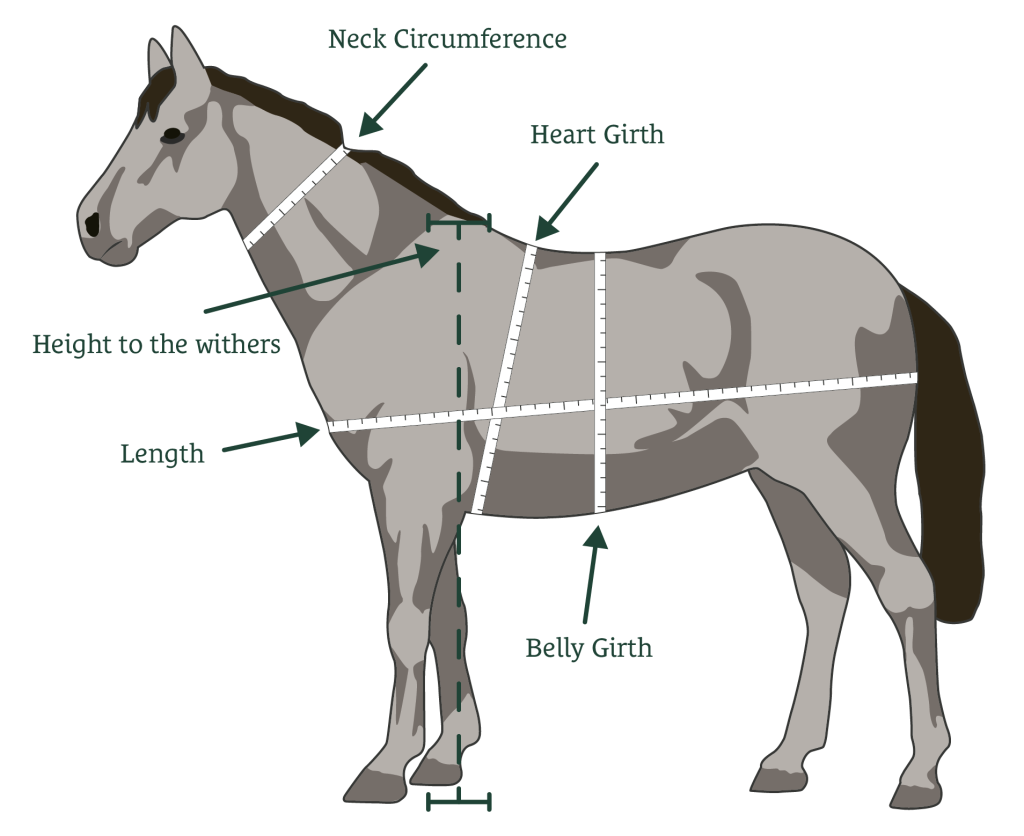
Belly girth
Measured around the widest point of the trunk (belly), belly-girth can be a very sensitive indicator of generalised fat loss in response to changes in diet.
This perhaps makes it one of the most useful weight monitoring tools in overweight horses and ponies. Monitoring heart girth can also be very useful.
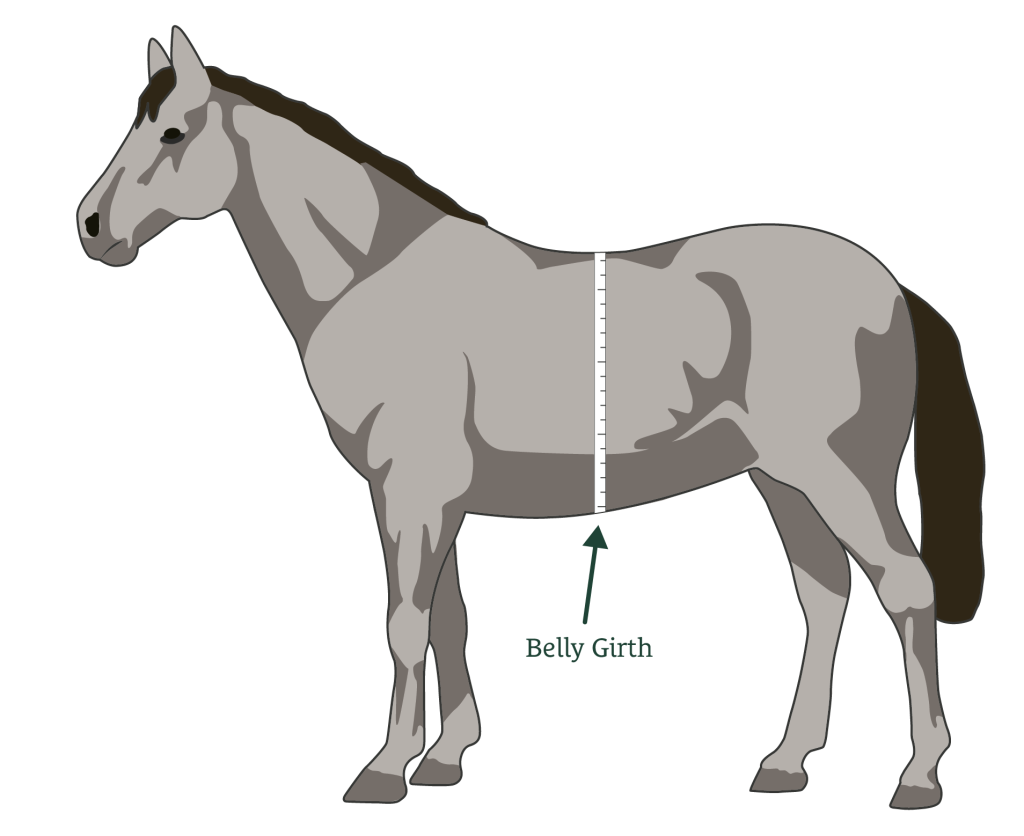
Heart girth
Heart girth is measured as the horse/ pony breathes out by passing a tape measure immediately behind the base of the withers and the elbows.
Tip: monitor belly girth and/ or heart girth weekly.
Rump width
Measured from the point of one hip to the point of the other.
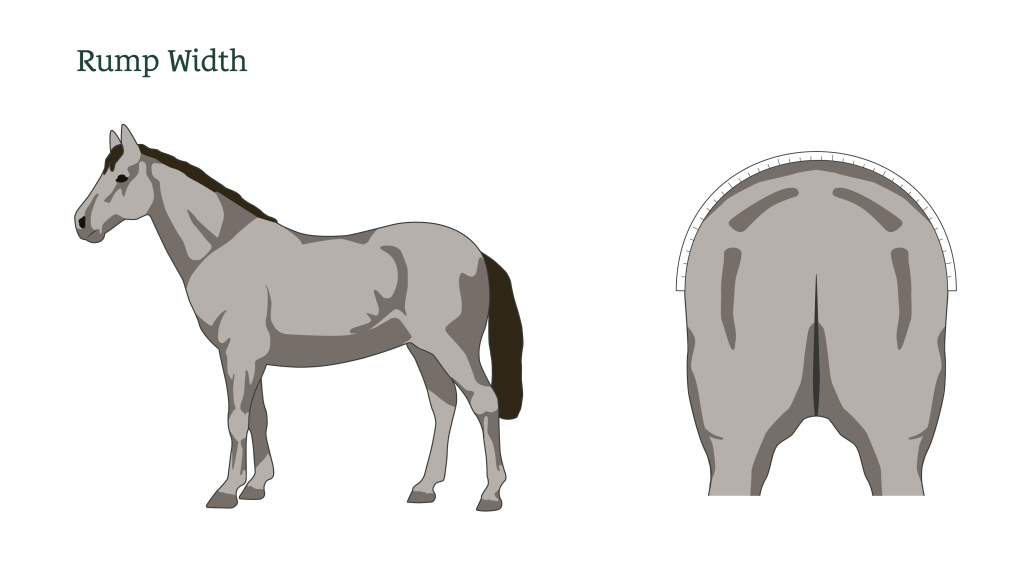
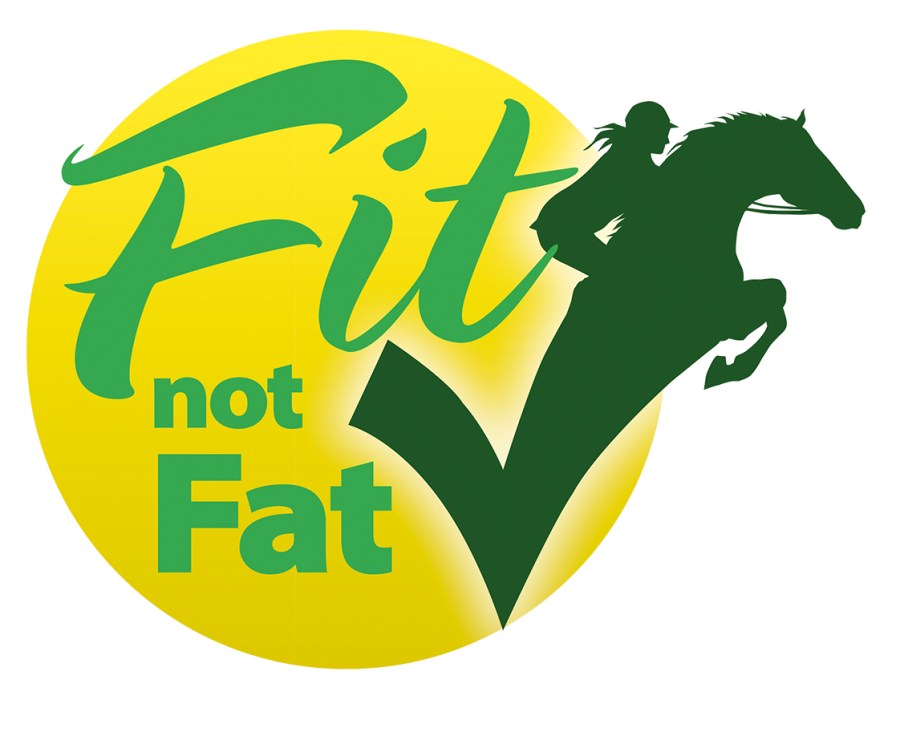
Have you heard about Your Horse’s #FitNotFat campaign? Equine obesity is an enormous welfare problem and we’re on a mission to provide owners and riders with the knowledge, skills and information you need to keep your horse in tip-top health. It could be life saving! Find out more
For more help or advice contact the SPILLERS Care-Line on 01908 226626 or visit spillers-feeds.com
*Potter SJ, Erdody ML Bamford N, Knowles E, Menzies-Gow N , Pippa K. Morrison P , Mc. Argo C, McIntosh BJ , Kaufman K Harris PA, Bailey SR (2023) Development of a body condition index to estimate adiposity in ponies and horses from morphometric measurements Equine Veterinary Journal in press.

